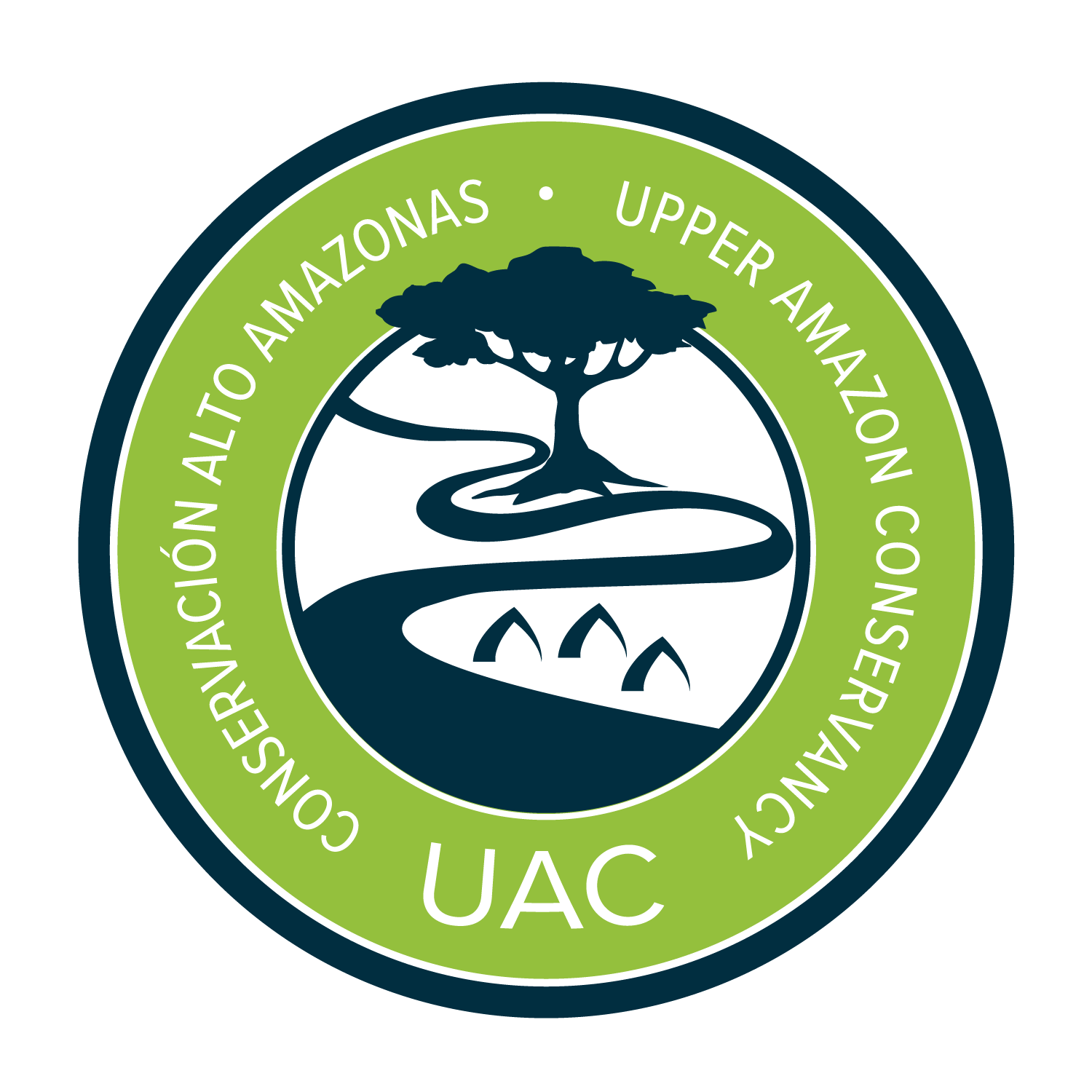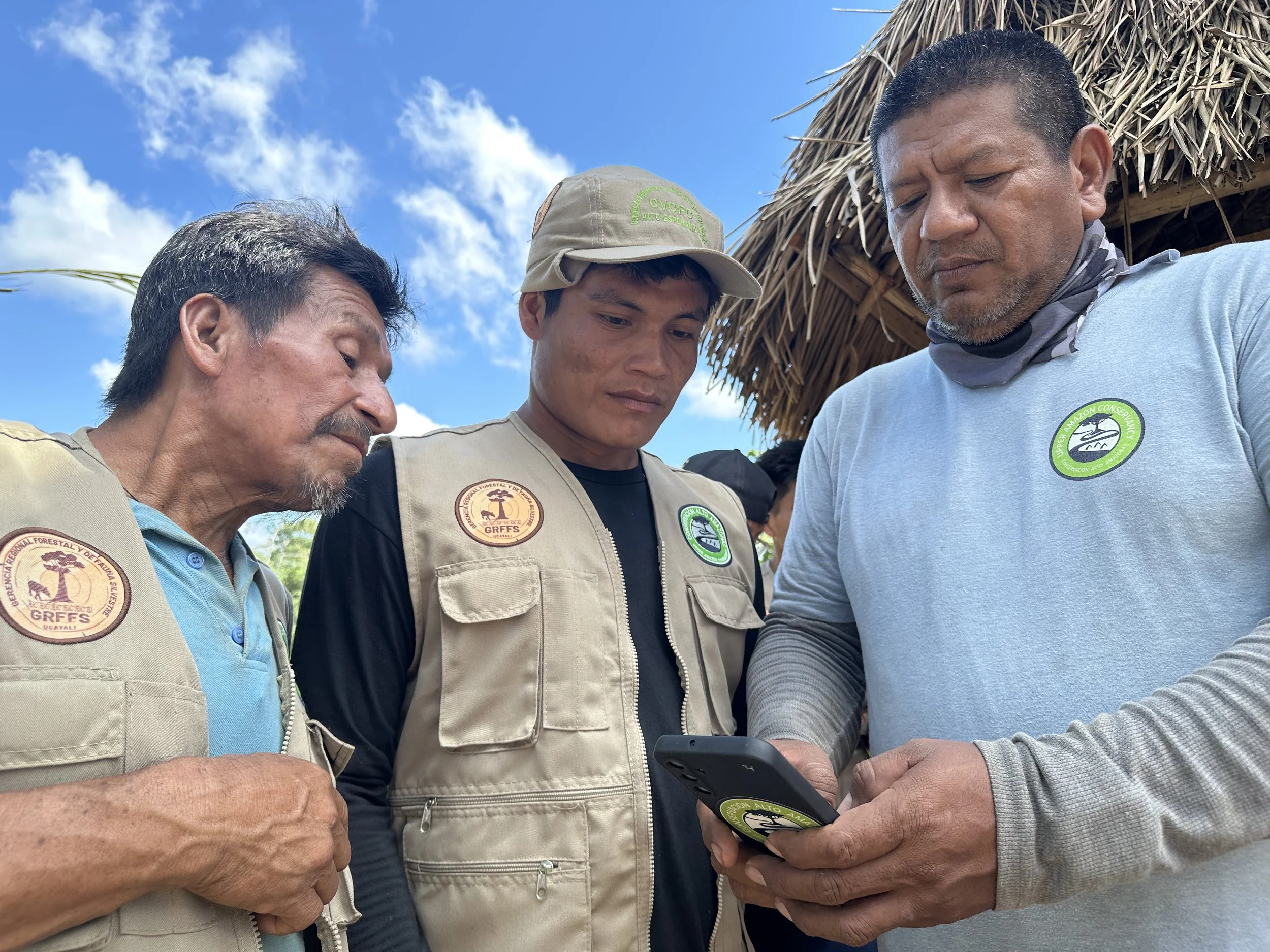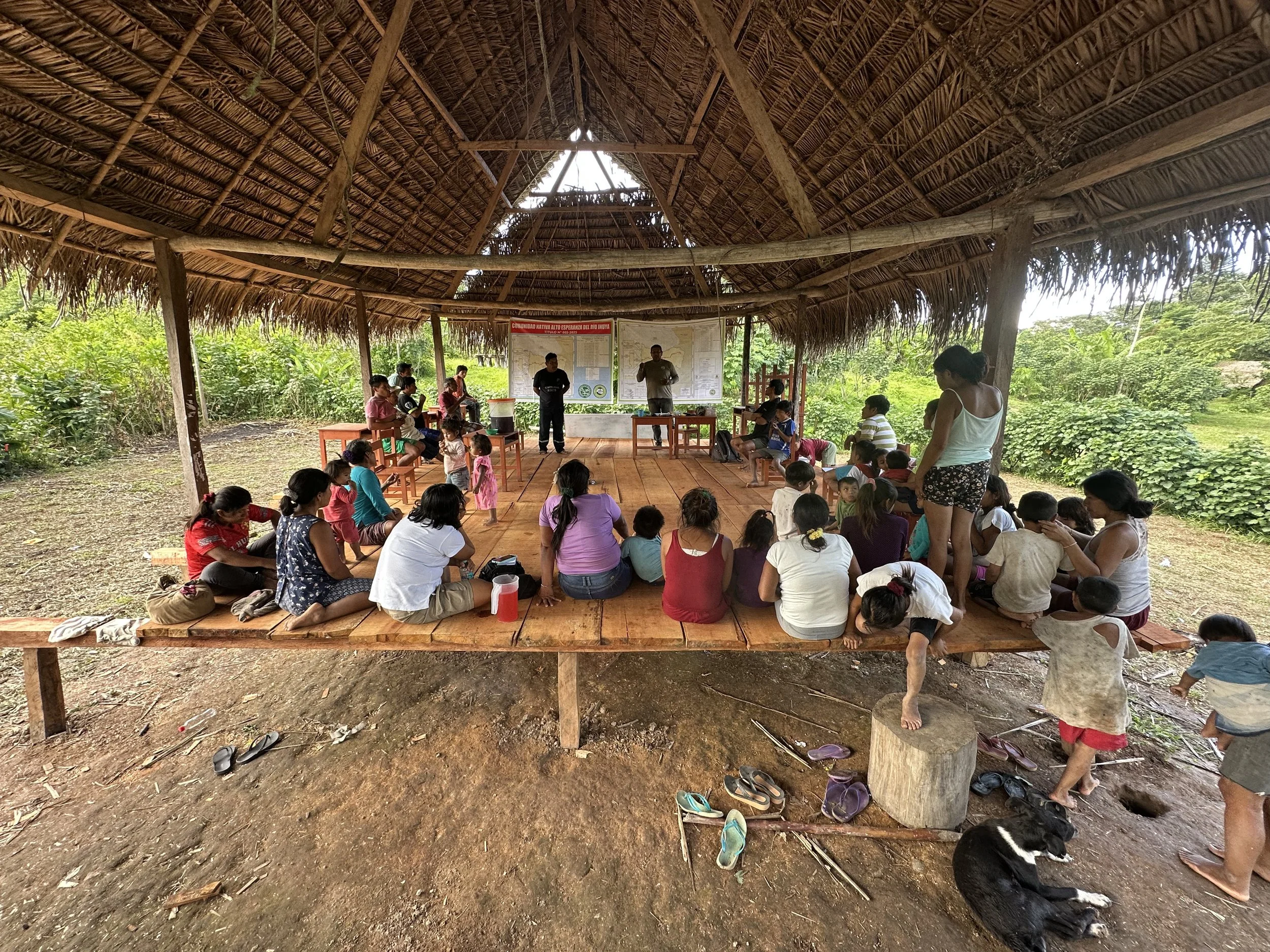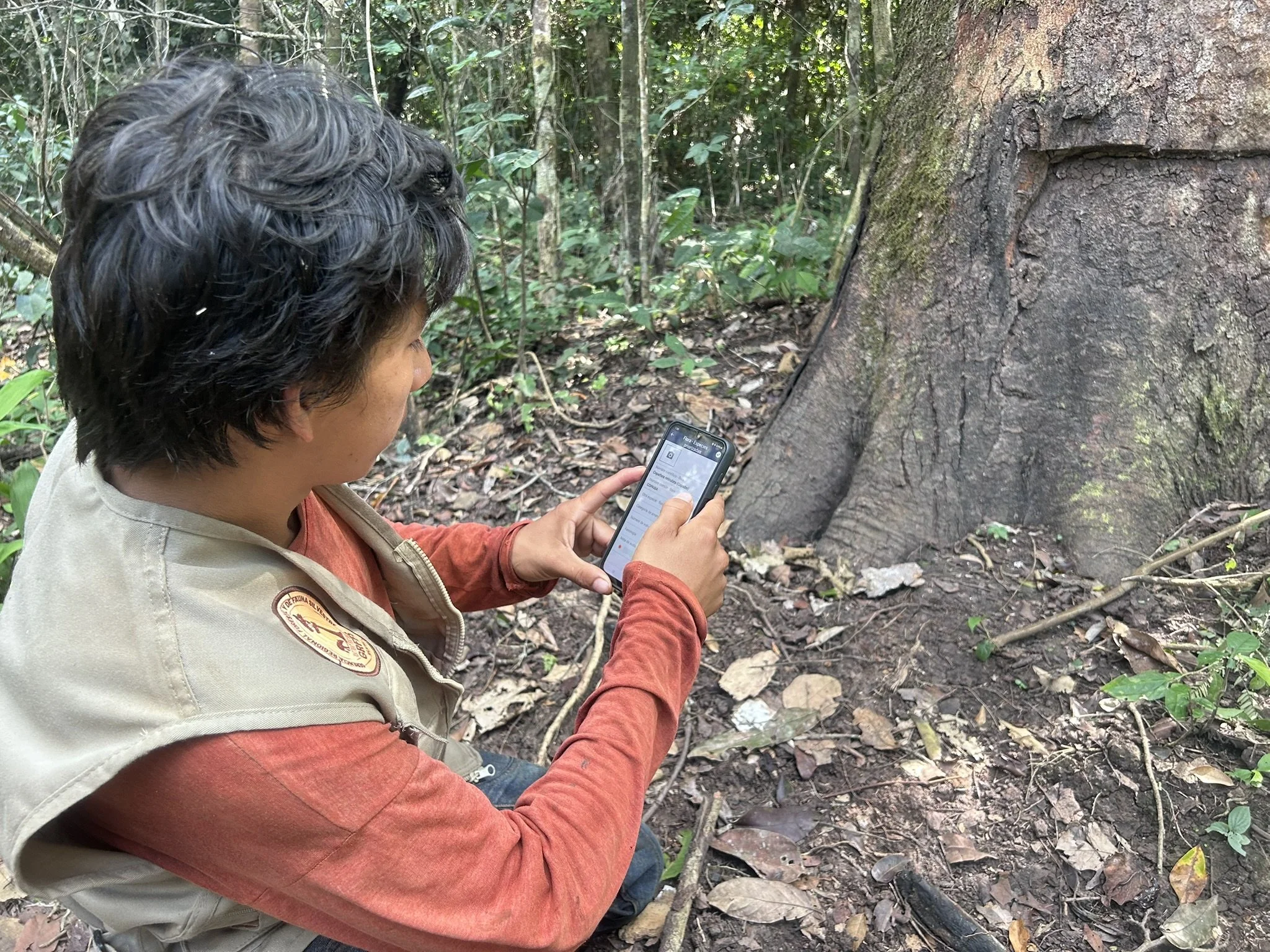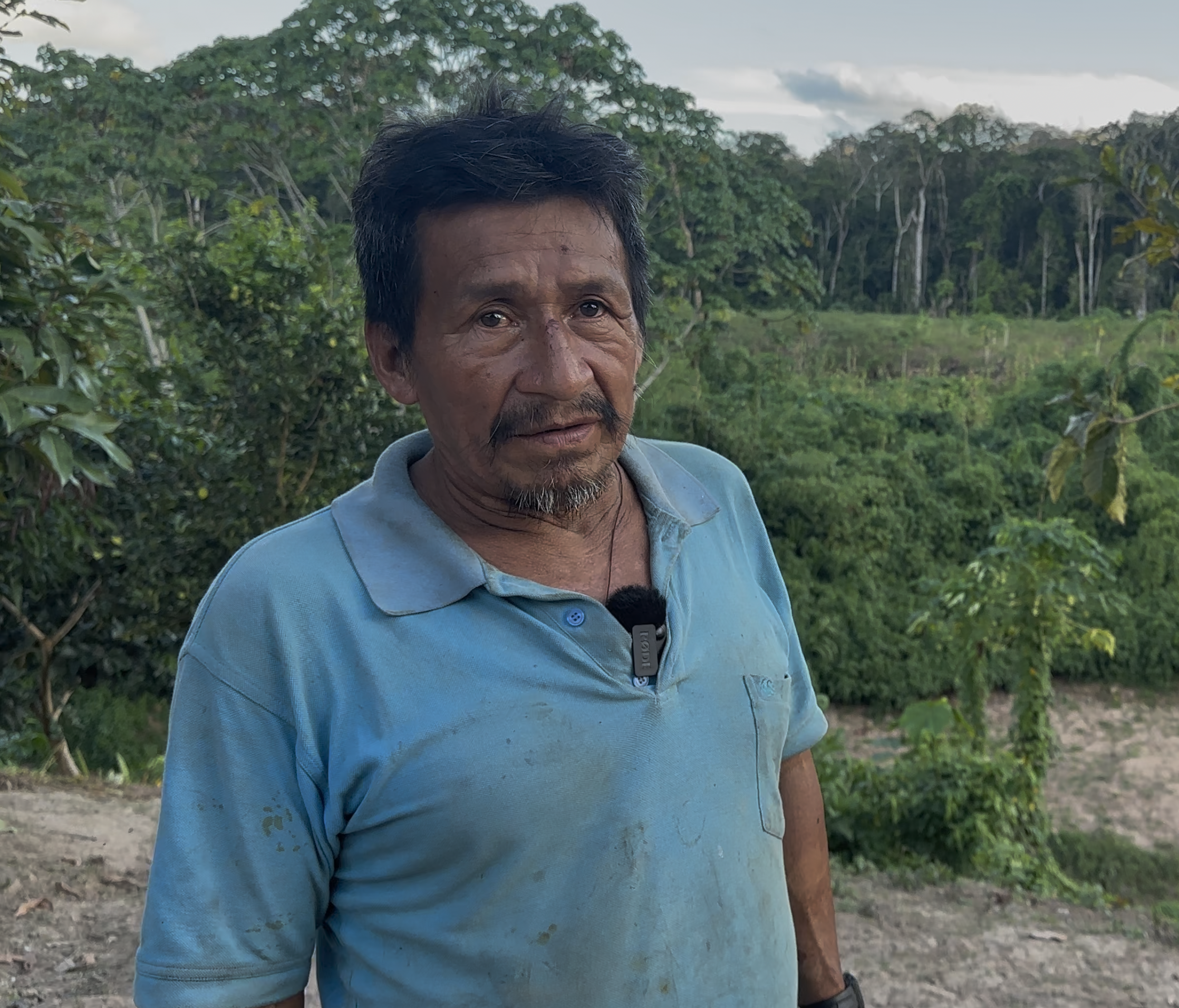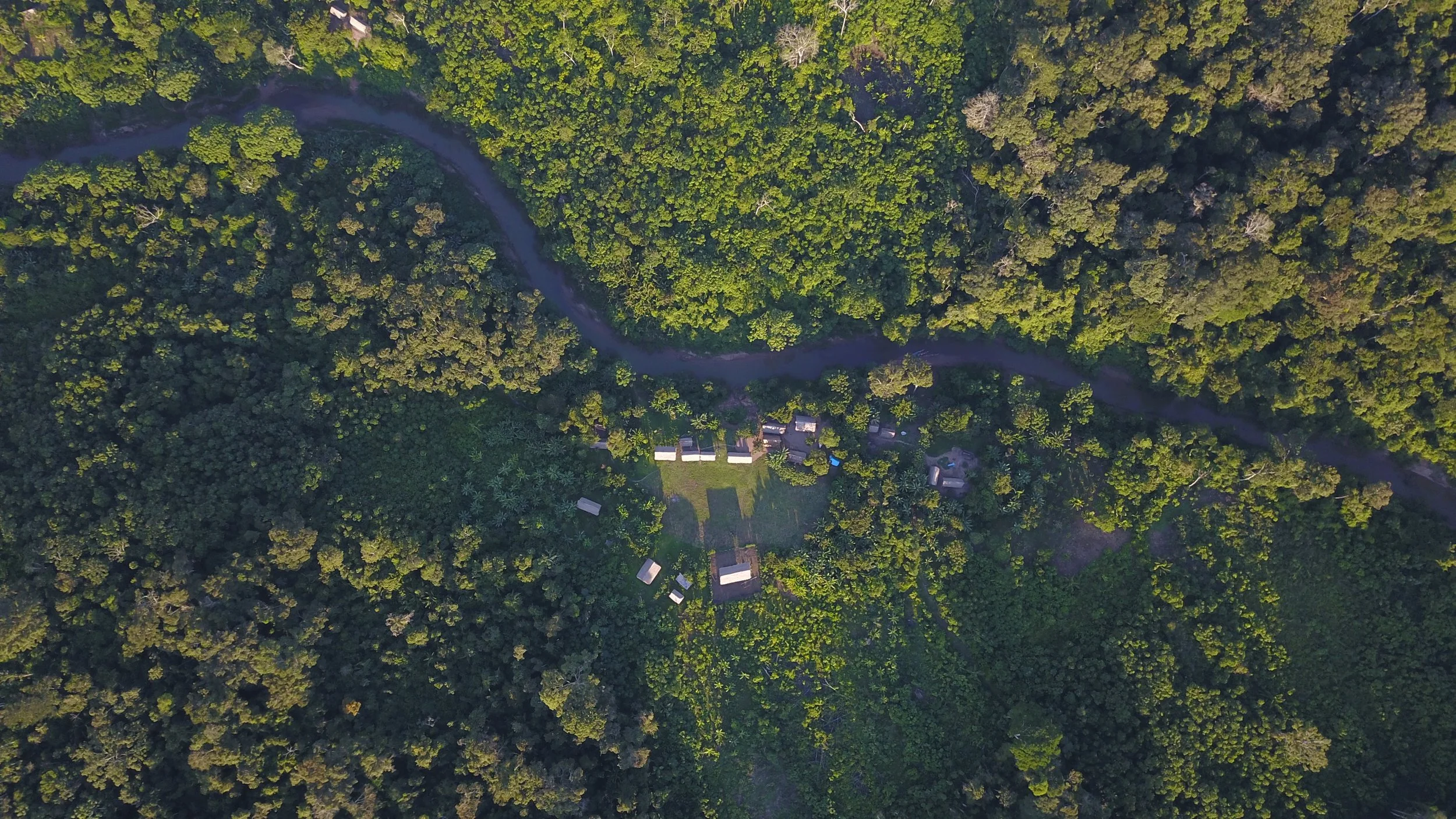Alto Esperanza strengthens its territorial autonomy with community surveillance and conservation
Practical training in the use of the Smart Mobile app for community-based surveillance.
The Amahuaca community advances in the protection of its ancestral territory in the Purús-Manu corridor, through agreements of conservation, communal control and sustainable production.
In the first week of June, the Amahuaca community of Alto Esperanza, located at the headwaters of the Inuya River, was visited by the Upper Amazon Conservancy (UAC) team, along with representatives of the Ministry of Culture and the National Service of Protected Natural Areas (SERNANP). The objective of this visit was to strengthen communal capacities for the protection of the territory, the conservation of the forest and the promotion of sustainable livelihoods.
Community assembly in Alto Esperanza during the technical visit by UAC, MINCUL, and SERNANP.
Significant progress was made during the visit. The community signed a conservation agreement with UAC and established a community forest surveillance and control committee (CFSCC), comprising community members who have been trained to patrol, monitor and report threats to their territory. The community also received training in using the Smart Mobile app, which enhances local surveillance capabilities.
Member of the Community Forest Surveillance and Control Committee during territorial monitoring activities.
In addition, technical training was carried out in grafting and pruning of cacao, contributing to improving sustainable and conservation-compatible production practices.
“With the technician's support, we have learnt how to graft and prune. This will improve the quality of our cacao and other fruits,” said one of the community members. These initiatives strengthen the local economy and help reduce pressure on natural resources.
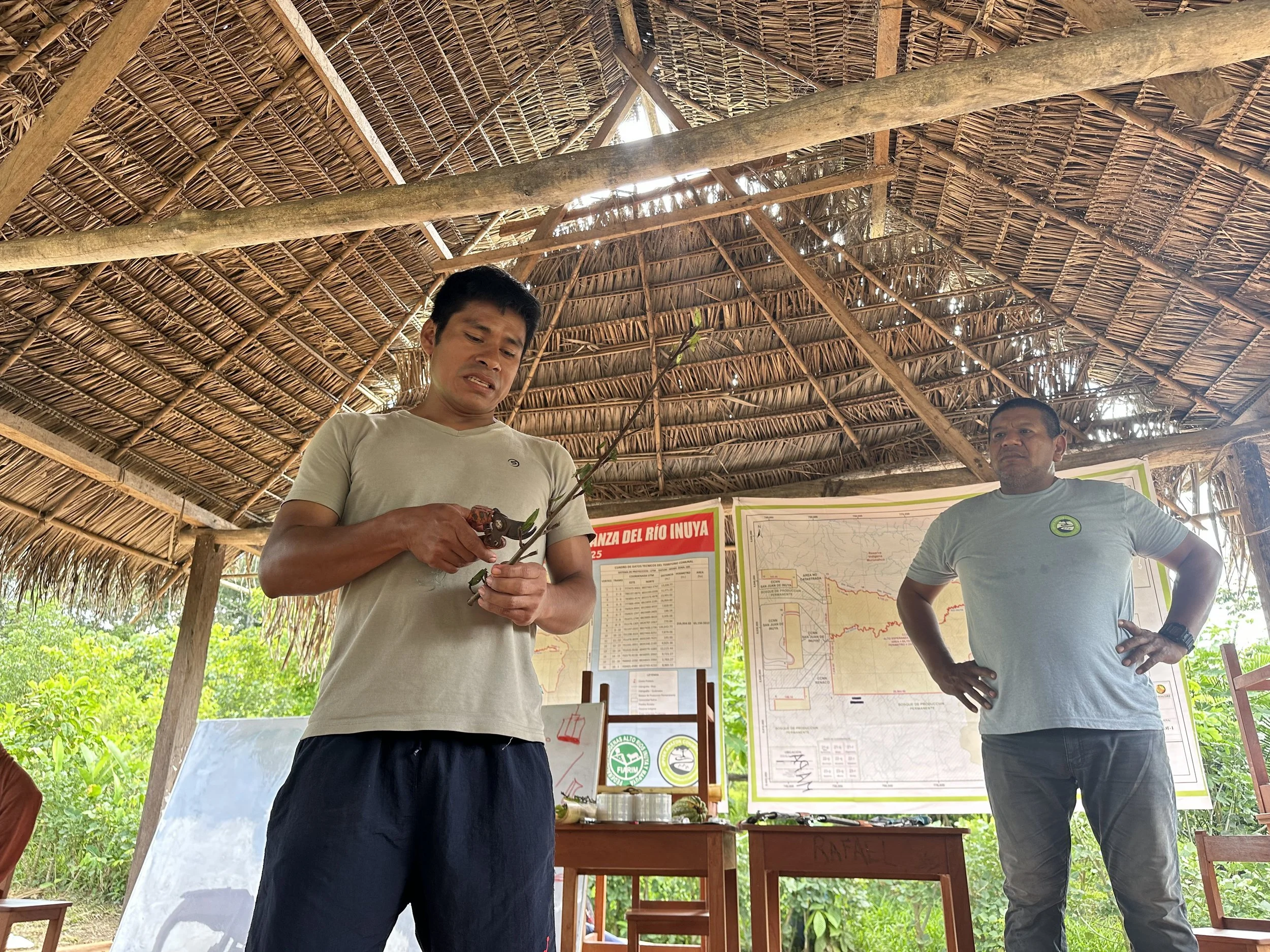
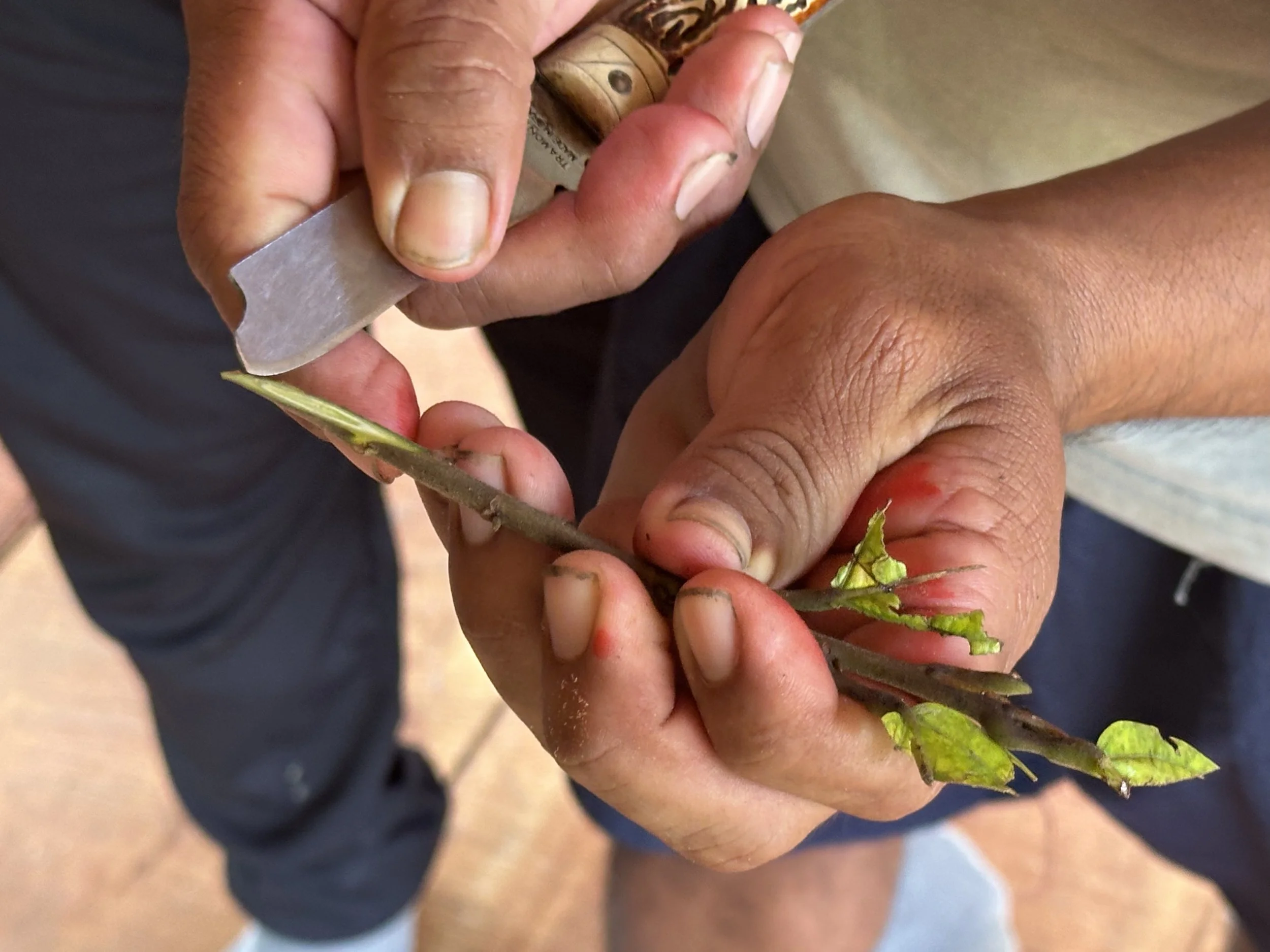


Practical workshop on cacao grafting and pruning as part of sustainable production strengthening.
The commitment to territorial security in Alto Esperanza is strong.
'For us, territorial security means preserving the forests and animals because our children and grandchildren's well-being depends on them. If outsiders come in and do illegal things, we will be left without food,” said Edson Sánchez, a member of the community watch committee.
The work in Alto Esperanza is part of the Purús-Manu corridor, a strategic territory for its biodiversity and for the presence of indigenous peoples in a situation of isolation and initial contact. This region, considered one of the last biocultural refuges on the planet, requires integrated actions that respect indigenous autonomy and ensure long-term sustainability.
Currently, the community faces administrative challenges that make it difficult to register its title deed with SUNARP, due to the overlap of timber forest concessions and the process of resizing the Permanent Production Forest (BPP). This situation, common in various Amazonian communities, shows the urgency of strengthening the mechanisms of dialogue and articulation between state institutions and indigenous peoples, to guarantee the legal security of the titled territories.
Landscape of the communal territory in the Purús-Manu corridor, an area of high biodiversity and cultural value.
This experience reaffirms the key role of community surveillance, conservation agreements and sustainable production as pillars for indigenous strengthening in highly vulnerable contexts. UAC will continue to accompany these processes from an approach based on rights, cultural respect and sustainability.
